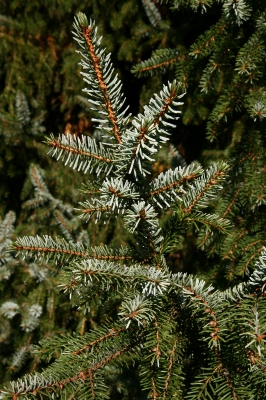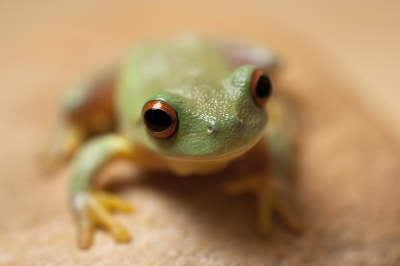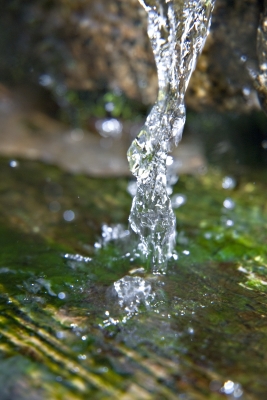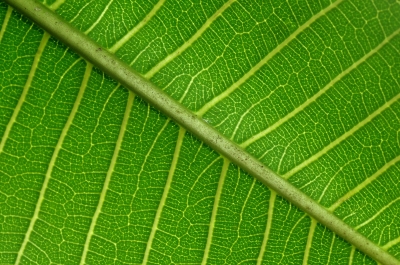—Jada Pinkett Smith
—Dr. Grace Lee Boggs, philosopher and Detroit community organizer
—ECO Girl Parent
The Five Pines
The White Pine is Michigan's state tree. We imagine these trees to be like pillars of thought, standing for ideas that are central to the ECO Girls mission. Here we offer a detailed explanation of our Five Key Concepts — the importance of developing ecological literacy in the local places where we live, fostering respect for our invaluable fresh water resources, understanding how to grow and prepare healthy foods, perceiving and helping to solve the challenges of energy use and climate change, and shaping habits of life and creative human cultures that are both sustainable and resilient.
Please Enter Our Forest: An Introduction to the “Five Pines”

Photo credit: FreeDigitalPhotos.net
The Eastern White Pine, native to Michigan, is our state tree. We have imagined five of these trees standing together in a grove, with each single pine tree representing a key idea that helps to shape the ECO Girls focus. Please enter our forest and rest underneath the shade of one of these ancient Grandmother pines. As you sit upon her soft bed of needles, listen quietly to her stories, rich with wisdom and knowledge of this place. Listen also to the entire community of plants and animals around you as birds sing and insects buzz. Feel the gentle breeze on your face and breathe with the trees. This is a safe place to be, and you can return here whenever you wish. You are home.
First Pine: Ecological Literacy — Getting to Know our Plant and Animal Neighbors
Plants
Take a deep breath. Do you know what you are breathing in? That’s right, oxygen. Okay now breathe out. What are you breathing out? Yes, carbon dioxide. Now do you know who breathes in carbon dioxide and breathes out oxygen? Plants! When we breathe, we are not breathing alone. We are actually breathing with all of the living plants on earth, participating in the life of the whole planet, just by breathing in and out. Cool, huh?
In addition to giving us oxygen to breathe, plants also give us most of our food. Fruits, vegetables, wheat, corn, maple syrup, and even chocolate come from plants! Plants also sustain the lives of many other animals. Plants help to keep our earth solid and prevent erosion. Perhaps most importantly, plants are really beautiful to look at and enjoy. Look outside and see how many plants are growing around you right now. Take some time to thank these plant friends.
Animals

Photo credit: BJWOK
Understanding animals helps us understand ourselves better because, guess what? We are animals! Sometimes humans like to think that we are separate from all other animals but the truth is we are just another part of the animal kingdom. We are part of the group of animals called mammals, animals that have fur or hair. Animals with wet smooth slimy skin that helps them breathe are called amphibians. Reptiles are animals with dry scaly skin. Can you guess what animals with feathers are called? You got it — birds! Fish are another group of animals and so are insects.
Each and every animal has special adaptations that help it survive. Some animals, like opossums, actually play dead to protect themselves against predators. Monarch butterflies are colored with bright orange patterns to warn potential predators that they are poisonous to eat.
All animals need three basic things to stay alive: food, water, and shelter. Most animals are able to find all of these things in their natural home, or habitat. Unfortunately many animals’ natural habitats are being destroyed by human development, making it difficult for many animals to survive. That is why it is so important for us to take care of every part of the earth that we can — even our own backyards or patios!
Animal challenge: Can you create a backyard wildlife habitat? Try using the space that you have behind your home to provide food, water, and shelter for animals in your neighborhood.
Second Pine: Water

Photo credit: Danilo Rizzuti
Do you know how much of your body is made of water? Is it more or less than half? If you answered more, you are correct! Our bodies are about 70%, or 2/3 water. This is also true for the earth: about 70% of our planet is water. So to understand water is to understand ourselves and each other. How we treat the water is how we are treating ourselves and each other.
Does the earth ever create new water? No, the water that we depend on to stay alive and healthy today is the same water that was on earth when the dinosaurs were alive. The earth continues to clean and recycle this ancient water through the water cycle. As water evaporates, condensates, and precipitates, it travels around the world and sustains all life. Natural ecosystems called wetlands help to filter and clean the water for us all.
Third Pine: Food
What is your favorite food? Have you ever stopped to think about all of the different things that helped make your food so good to eat? Think of all the rain and water, earth and soil, worms and bugs, people and communities that helped to cultivate the seeds that produced the ingredients for your meal. Wow! That’s a lot of different elements isn’t it?
Sometimes we forget that our food comes from the earth and we fail to appreciate the hard work that is required for farmers to raise crops for us to eat. That is why we are working to plant and cultivate an ECO Girls garden. By gardening together we will learn how to raise food directly from the earth, and we will also enjoy the fruits (and vegetables) of our labor!
Fourth Pine: Energy
Start jumping up and down right now! Are you jumping yet? It’s a lot of fun, isn’t it? As you are jumping and moving around, begin to consider where your energy is coming from.
Does your energy come from the food you ate earlier today? Where did that energy come from? Your food was made of plants and animals. Where did their energy come from? Animals also ate plants and animals for their food. So where do plants get their energy? They don’t eat food like us animals. Plants are called producers, because they produce their own food directly from the sun! The sun is the source of much of the earth’s energy and is passed along through the food web to plants and animals (including us humans).
People have developed many technologies to harness energy from the earth and the sun. Solar panels, hydroelectric dams, and wind farms are all examples of “renewable energy” or energy that won’t run out because sun, wind and water can make themselves anew. Unfortunately, much of the energy we use to power our electronics, run our cars, and heat our homes today comes from non-renewable sources such as oil, coal, and natural gas. These sources are called fossil fuels because they are made of ancient fossil materials left from plants and animals alive on earth a long time ago. Fossil fuels are finite and will someday run out. Plus, when we burn fossil fuels they release greenhouse gasses that contribute to global climate change, or the increase in temperature of the earth’s surface. Increasing temperatures worldwide cause changes in climate across the globe.
Energy challenge: How can we use more renewable energy sources every day and rely less on fossil fuels?
Fifth Pine: Sustainability
Life has been growing and water has been flowing on the earth for billions of years. We humans have been around for a much shorter amount of time in the earth’s history, for only a few million years. We have a lot to learn from the ancient wisdom of our Mother Earth.
Many of our ancestors who were alive a long time ago knew how to live in such a way that they were in balance with their natural surroundings. Only in the last few centuries have humans drastically changed the ecology of the planet and created a way of life that is not in balance with the earth’s natural communities.

Photo credit: Arvind Balaraman
How do we learn to live in sustainable ways so that all of earth’s creatures can survive and be happy and healthy for a long time into the future? The answers to this question are found in the wise cycles of nature, in the stillness of the trees and the movements of the ocean waves. When we take the time to be quiet and listen to nature, we are reminded that we are just one part of an immense web of living and non-living things. Our earth has evolved in many brilliant ways that continue to sustain us, and will sustain all forms of life, if we live in accordance with this delicate balance.
It’s pretty cool to be part of such a great big planet that takes care of us so well, isn’t it? It also means that we have a special responsibility to take care of our earth, air, and water, not just for us but for all the people, plants, and animals that will live here long after we are gone.
Conclusion: Strength In Our Diversity
Just as our Eco Girls come from a wide range of backgrounds and experiences, our five pines — individual trees that together form a grove — remind us of the strength that is found in our diversity. When we come together and share our creativity and passion for the earth, ECO Girls forms an inclusive community modeled upon the forest ecosystem, recognizing our interdependence as part of a larger whole. We understand that the health and well-being of each girl is vital to the health and well-being of the entire community. It is within this ecological framework that we seek to embody our mission and ground our five pillars of thought.




